
Grossular Garnet Gemstone: Properties, Meanings, Value & More
 Grossular garnet is a species in the garnet gemstone family with popular varieties like tsavorite and hessonite. This group has the most color diversity, coming in every color but blue, and has the only natural, gem-quality colorless garnets. However, the stones in this group aren’t used as frequently in jewelry.
Grossular garnet is a species in the garnet gemstone family with popular varieties like tsavorite and hessonite. This group has the most color diversity, coming in every color but blue, and has the only natural, gem-quality colorless garnets. However, the stones in this group aren’t used as frequently in jewelry.
Is grossular garnet rare? Some varieties are rare, like tsavorite and colorless “leuco” garnets, but the species overall is widespread.
Unlike other garnets, grossular garnet colors are typically green, not red. Plus, Vermont honors grossular garnet as its state gemstone.
Want to know more? Read on to learn about grossular garnet varieties, properties, meanings, prices, and more!

What Is Grossular Garnet?
Grossular or grossularite garnet is a semi-precious gemstone with multiple varieties in different colors. The term “grossularite” is technically a synonym, though the International Mineralogical Association (IMA) discourages using it to avoid confusion with the rock called “grossularite.”
Some other monikers for grossular garnet include:
Colophonite (coarse granules)
Ernite
Gooseberry garnet
Olyntholitelolytholite
Romanzovite
Tellemarkite
Some sellers may (but shouldn’t) use misnomers like African jade, garnet jade, Transvaal jade, or South African jade.
As a garnet, grossular gems are January birthstones, 2nd wedding anniversary gems, and lucky stones for Capricorn or Aquarius.

Grossular Garnet Specifications & Characteristics
In the complex garnet family, grossular belongs to the calcium-dominant ugrandite series alongside uvarovite and andradite. Grossular garnets are calcium aluminum silicates, but the calcium and aluminum can be partially replaced by iron.
Other garnet varieties may contain traces of grossular, like rhodolite and Malaya garnet.
How can you tell if garnet is grossular?
Firstly, grossular garnets are rarely dark or red in color. Second, they have distinct internal swirls (from diopside crystals), irregular streaks, and anomalous double-refraction, all visible under a microscope. Lastly, crystals are usually zoned, commonly twinned, and often striated.
Here are grossular garnet’s properties listed:
Mohs hardness: 6.5-7.5
Color: White, gray, colorless, yellow, yellow-green, shades of green, brown, pink, orange, orange-red, red, black
Crystal structure: Isometric (cubic)
Luster: Vitreous, greasy, resinous, or adamantine
Transparency: Translucent to transparent
Refractive index: 1.72-1.80
Density: 3.40-3.73
Cleavage: None
Fracture: Irregular/uneven or conchoidal
Streak: White to pale brownish-white or brown
Luminescence: Fluorescence & X-ray colors sometimes present; Colorless to light green stones: orange in LW-UV, yellow-orange in SW-UV; Yellow stones: orange, pink, or red in LW-UV & SW-UV; Massive material, some faceted gems, and yellow Tanzanian specimens: orange in X-rays
Pleochroism: None
Birefringence: None; Sometimes anomalous
Dispersion: 0.027-0.028 (moderate)
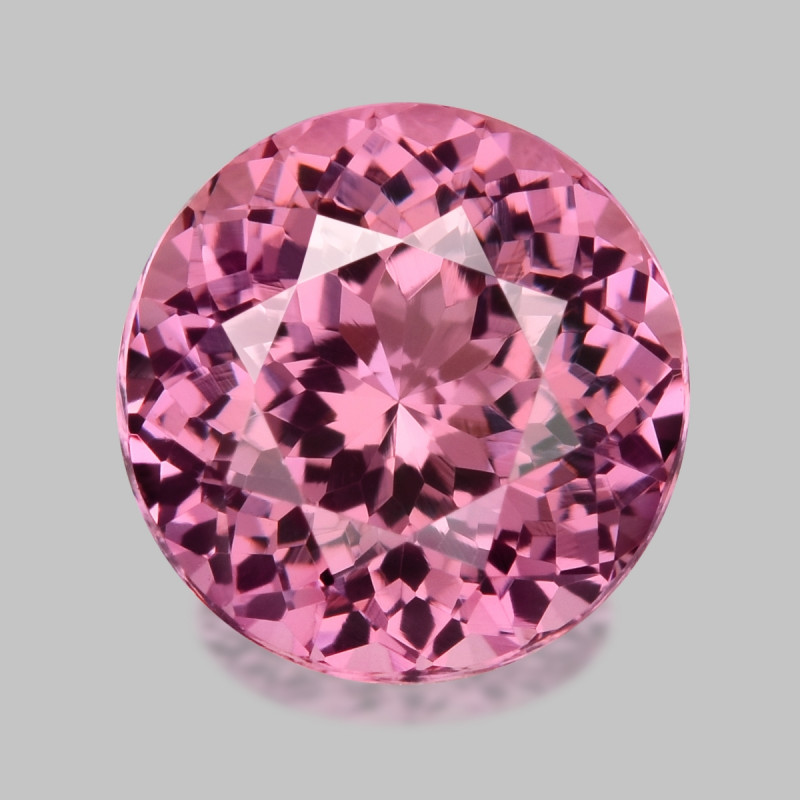 Pictured above: Imperial garnet
Pictured above: Imperial garnet
Types of Grossular Garnet
Grossular garnet has a few varieties, some mixtures with other garnet species. Certain grossular subtypes are named (or distinguished) simply for their color:
Gooseberry Garnet: Light green to light greenish-brown
Green Grossular Garnet: Bluish-green to yellowish-green
Imperial Garnet: Light pink to pomegranate, often orange to yellow undertones
Mint Garnet: Light minty green; Also called Merelani mint garnet for Merelani, Tanzania source; Nicknamed “UV garnet” after common peach-colored LW-UV fluorescence
Raspberry Garnet: Raspberry-red
Some trade-name varieties are:
Californite: Pale to medium green mixture of grossular and idocrase (vesuvianite)
Rosolite: Light pink to raspberry-red; Also called “landerite” or “xalostocite”
Viluite: Olive-green, sometimes red or brown
Significant grossular varieties include:
Hessonite

Hessonite is an abundant yellowish-red to reddish-orange grossular variety also called “cinnamon stone.” The gem often has a “whiskey in water” look with fluid amber hues.
Its name derives from the Greek hēssōn for “inferior” because it has a lower Mohs hardness and density than most garnets.
Tsavorite

Wondering about grossular garnet vs. tsavorite? They’re the same thing! Tsavorite is a rare, highly desired grossular variety in gorgeous greens. It’s a great alternative to emerald, as it’s more durable with fewer inclusions.
Tsavorite may be confused with demantoid, another green garnet in the andradite species.
Mali Garnet
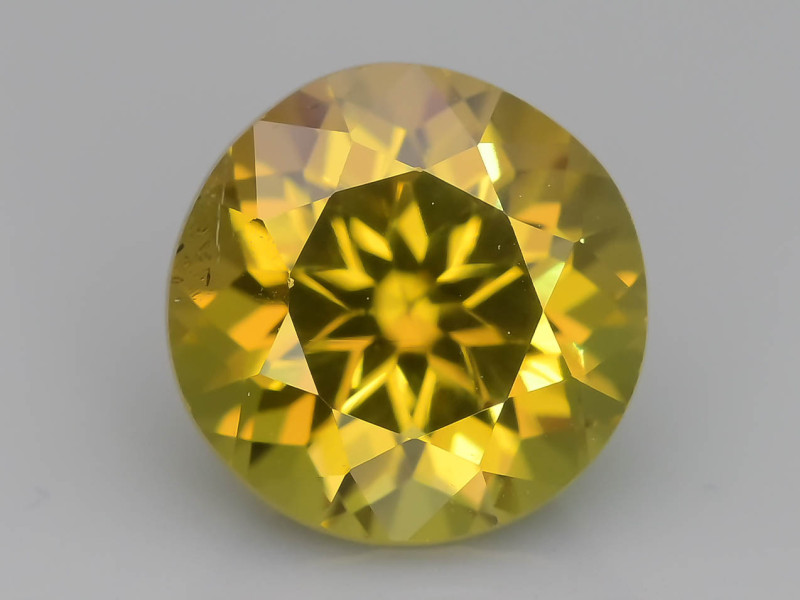
Mali garnet is a very rare yellow, green, or brown mixture of andradite and grossular. Also called “grandite garnet,” it has great sparkle with bright, even coloring and only comes from Mali, Africa.
Leuco Garnet
Leuco garnet (or leuco-garnet) is an extremely rare grossular variety that’s transparent and colorless.
Hydrogrossular Garnet (Debated)
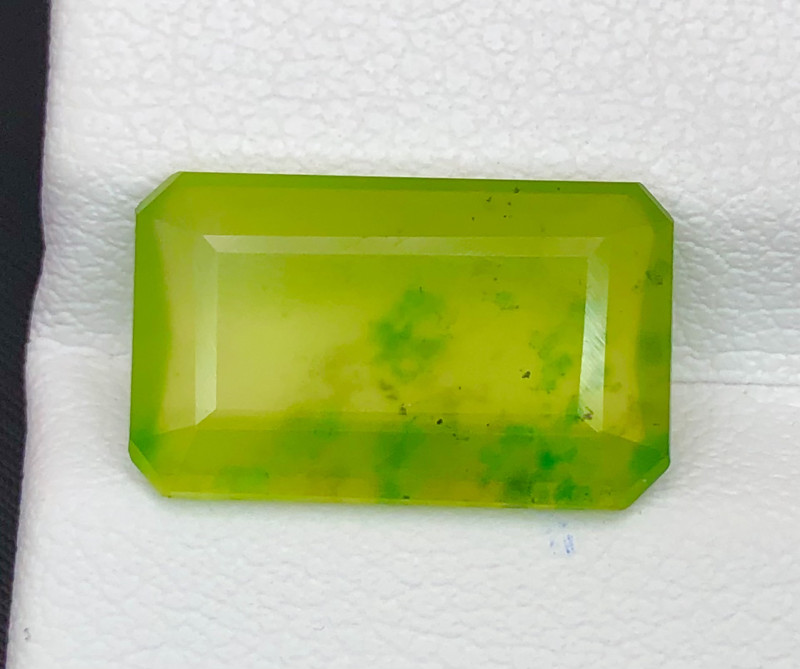
Whether hydrogrossular garnet is a grossular variety (or even a true garnet variety) is debated, but many gemologists say yes. It has the same composition as grossular, with the silica partially replaced by hydroxide.
Hydrogrossular garnets are generally green, blue-green, white, pink, or gray, often with dark, pepper-like specks of magnetite.

Grossular Garnet Meaning & History
Metaphysically, grossular garnet symbolizes abundance, empowerment, and success. It reflects the nurturement and renewal of nature, along with representing friendship and affection.
History
The first grossular garnets to be officially recognized came from the Akhtaragda River in Russia. German mineralogist Abraham Gottlob Werner first named them Kanelstein (German for “cinnamon stone”) in 1803 before renaming them “grossularite” in 1808.
The grossularite name references the original specimens’ resemblance in color to the pale green gooseberry, or Ribes grossularia.
Hessonite goes way further back. It was beloved by ancients Greeks and Romans, used in jewelry and carvings. In fact, many historical engraved gemstones thought to be zircon were actually hessonite.
The discoveries of tsavorite and Mali garnets brought grossular modern recognition. First, Scottish-Kenyan gemologist Campbell Bridges discovered tsavorite in Tanzania in 1967 and more appeared shortly after in Kenya. The Kenyan discovery in Tsavo National Park led to tsavorite’s name.
A second notable variety, Mali garnet, was discovered in Mali in 1994.
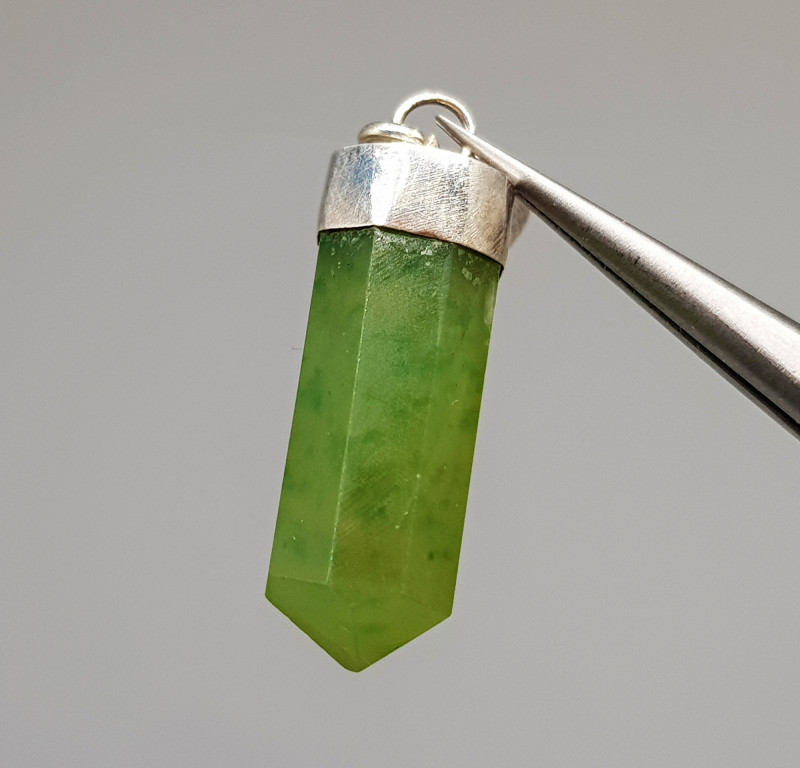
Grossular Garnet Healing Properties
As a healing stone, grossular garnet is powerful. Like other green gemstones, green grossular crystals offer rejuvenation and nourishment. They’re also great heart chakra stones. Meanwhile, orange gemstones like hessonite boost focus and creativity.
What is grossular garnet good for physically?
Physical Healing
Crystal healers recommend grossular garnet for aiding or treating:
Inflammation
Cell regeneration
Respiratory illness
Metabolism regulation
Emotional Healing
Grossular garnets are recommended for balancing emotions, promoting gratitude, and encouraging you to focus on helping others without worrying about what they think of you.

Grossular Garnet Gemstone Properties
Grossular garnet value is graded on color, cut, clarity, carat weight, and treatments.
Color
Most grossular garnet colors are light- to medium-toned and often green. Pure specimens are colorless, but they’re rare. Impurities create new shades, like the vanadium and chromium behind tsavorite or mint garnet green.
Cut
Many grossular garnets are faceted, though it’s rarer for certain varieties. Hydrogrossular garnets are usually cut as cabochons, and massive white material may be carved.
Clarity
Garnets have Type II colored gemstone clarity, so minor visible inclusions are expected. Common grossular inclusions include:
Crystals (e.g. zircon, diopside, actinolite, apatite)
Fingerprints (tubes from healed fractures)
Growth lines
Irregular streaks at grain boundaries
Two-phase inclusions
Different varieties have particular inclusions:
Hessonite: Rounded, stubby crystals, oily “scotch in water” or “heat wave” effect
Tsavorite: Graphite platelets, healed fractures, feathers, fingerprints, needles, fibrous asbestos
Mint Garnet: Graphite platelets, healed fractures, silk, rounded minerals
Hydrogrossular: Magnetite
Green Grossular: Needle- or rod-like crystals
Leuco: Healed fractures, minerals
Mali garnets are often eye-clean, but some have fingerprints or small crystals along parallel growth planes.
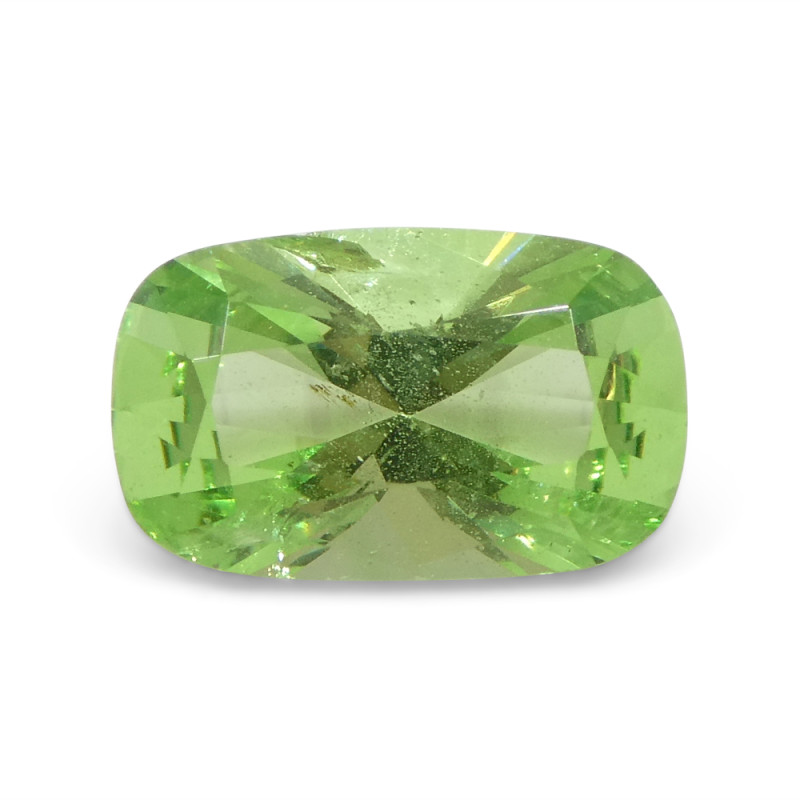
Carat Weight & Size
Many grossular specimens are available in huge sizes, particularly for cabochons or carvings. Hessonite can be found in hundreds of carats, but small specimens have better clarity. Likewise, tsavorites usually only have good clarity under 1 carat. Mint garnets are usually under 1 carat.
Any of these varieties in larger sizes with good clarity would be quite valuable.
Treatments & Synthetics
Grossular is very rarely treated with dye, sometimes to simulate ruby. Gemologists have experimented with irradiation to make pale or colorless grossular garnets yellowish-green, but it’s unstable.
Scientists have created synthetic grossular garnets for research but not commercial use.
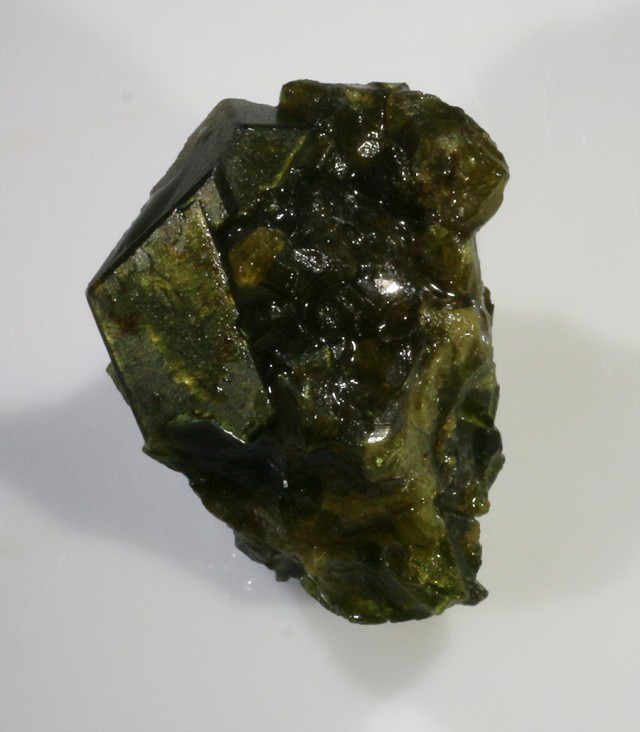
Grossular Garnet Formation & Sources
Garnets typically form when sedimentary rocks undergo metamorphism via heat and pressure deep underground, which changes the minerals inside into garnets.
Grossular garnets occur in limestones and impure calcareous rocks that underwent contact metamorphism, schists, and serpentines.
Mining Locations
Where does grossular garnet come from? All over the world! Significant sources include:
Australia
Brazil
Canada
China
Italy
Kenya
Madagascar
Mali
Mexico
Myanmar
Pakistan
Russia
South Africa
Sri Lanka
Switzerland
Tanzania
USA (California, New England, Vermont, Washington)
Hessonite mostly comes from Sri Lanka and India, though also Brazil and California. Leuco garnets primarily come from Myanmar and Sri Lanka. Tsavorites only come from Tanzania and Kenya. Mint garnets come from Tanzania, Kenya, and Madagascar.
Now, how much is grossular garnet worth?
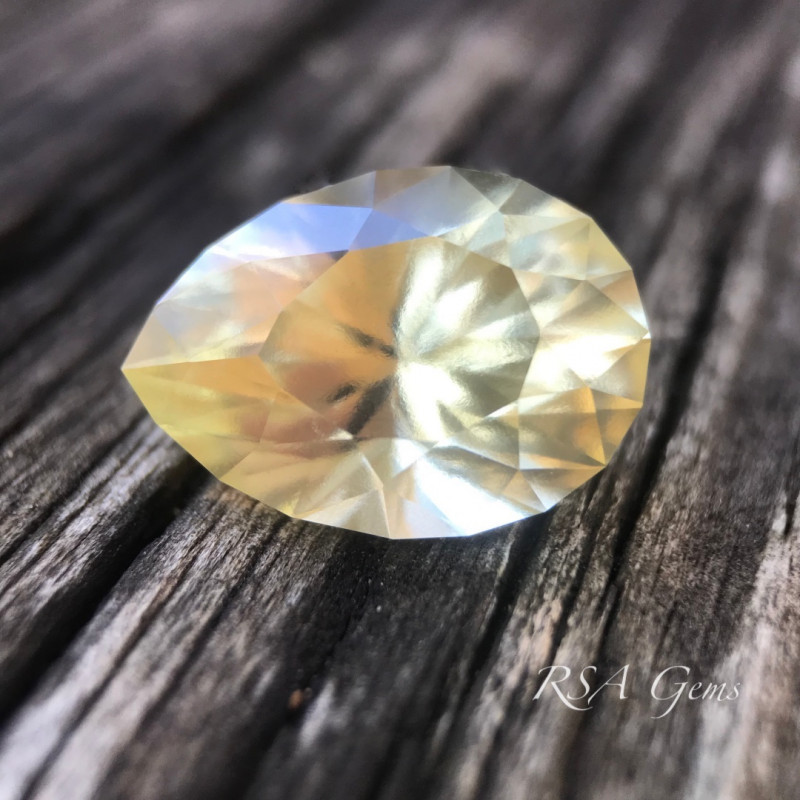
Grossular Garnet Price & Value
Grossular garnet prices per carat range by quality, variety, and size.
Starting with the prices of faceted grossulars by basic colors and sizes:
Mint: $80-$200 per ct when 0.5-1 ct; $180-$850 per ct when 1-5 cts; up to $900 per ct when 5+ cts
Yellow/Orange: $10-$50 per ct when 0.5-1 ct; up to $100 per ct when 1-5 cts; up to $200 per carat when 5+ cts
Yellow/Green: $30-$600 per ct when 0.5-1 ct; up to $600 per ct when 1+ cts
Other: $70 per ct when 0.5-1 ct; $70-$300 per ct when 1-5 cts
Faceted hessonite garnets are generally $20-$150 per carat in any size.
Faceted tsavorites are $300-$800 per carat when 0.5-1 carat, $500-$3,500 per carat when 1-2 carats, and $600-$10,000 per carat when 2 or more carats.
Mali garnets, faceted, are $75 to $1,500 per carat in any size.
Cabochons of any color are usually $1-$20 per carat.
Grossular Garnet Care and Maintenance
Last up is gemstone care. Given the range of hardness levels, we recommend protective settings for any grossular garnet rings.
Highly included grossular stones are more fragile. Grossular garnets are somewhat heat-sensitive, so avoid exposure to extreme heat or mechanical cleaning systems.
Clean grossular garnets with mild soap, lukewarm water, and a soft toothbrush.

Engrossed by Grossular Garnets Yet?
Grossular garnets are the underrated sibling of the garnet family. With virtually any color, prices for every budget, and beautiful sparkle, what’s not to love?
Search the Gemstone Encyclopedia
Related Auctions
Related Articles
Originally the Birthstones or gemstones were associated with a zodiac sign or the month of a individuals birth. Find out what your stone is and view the stones we have for sale
8th Feb 2021
There are dozens of quartz and chalcedony gems with various colors and patterns. Learn all about quartz properties and every type of quartz, from amethyst and agate to plasma and phantom quartz!
15th Oct 2020
Hackmanite is a pink to violet sodalite gem known for its unique color-change and luminescence. Learn why hackmanite is special, from its rare qualities to the types of hackmanite jewelry available.
28th Mar 2018
Latest Articles
Shortite is a rare mineral and rarer gemstone, usually found as colorless or yellow wedge-shaped crystals. Learn the value, history, and properties of shortite in this guide!
9th Dec 2024
Senarmontite is an uncommon antimony mineral mostly used industrially but occasionally collected as rare gems or pearly crystals. Find out all of the traits, uses, prices, and history of senarmontite.
27th Nov 2024
Tantalite is a group of red, brown, or black minerals containing the rare and valuable element tantalum. Discover the uses, history, prices, and properties of tantalite gemstones in this guide!
11th Nov 2024
Article Categories
How To's is where you will find helpful articles from gem Rock Auctions on how to cut gemstones, select gemstones and buy gemstones.
9 Articles





